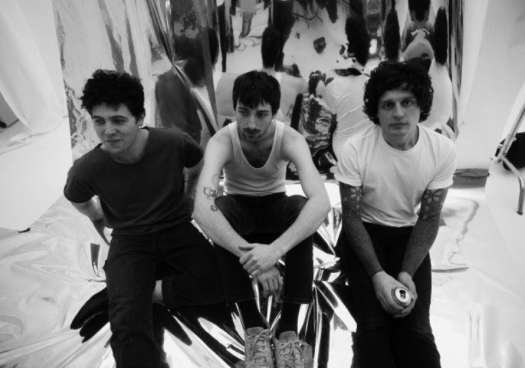Despite its provocative title, Berliner Robert Lippok did not record his new disc without help. Klara Lewis makes a contribution, albeit a remote one — the two artists chose to perform simultaneously, but not physically together.
As is the case in relationships — professional and otherwise — this often produces a superior outcome. Applied Autonomy marks Lippok's return to the studio after a seven-year absence and it's a riveting listen.
Lippok was born in 1966 in what was then East Berlin. One of the benefits of communism was its support of the (officially sanctioned) arts. That afforded Lippok the opportunity to study to become a theatre shoemaker. The fall of the Berlin Wall led to an abundance of pragmatism, among other things, and so he branched out, building a respected career as a musician, visual artist and stage designer.
Applied Autonomy is very much the work of a multidisciplinary artist. Lippock's music is bolstered by his flair for the dramatic. Tracks like "All Objects Are Moving," featuring a non-linear countdown by Lewis, and "Varieties of Sound" are pure Front 242-industrial. Others, like the album's title track and a series of pieces entitled "Scene 2," "Scene 3" and "Scene 4" are just as visual as their names suggest.
The album works best when Lippok lets each piece evolve for a decent stretch of time. The closer "Samtal" is a prime example; it's a beautiful, rich chunk of ear candy that runs more than 14 minutes. Too many of these 11 tracks — four, in fact — clock in at less than 90 seconds. That interrupts the album's flow, without really adding much to Lippok's otherwise strong return to the studio.
(Raster-Noton)As is the case in relationships — professional and otherwise — this often produces a superior outcome. Applied Autonomy marks Lippok's return to the studio after a seven-year absence and it's a riveting listen.
Lippok was born in 1966 in what was then East Berlin. One of the benefits of communism was its support of the (officially sanctioned) arts. That afforded Lippok the opportunity to study to become a theatre shoemaker. The fall of the Berlin Wall led to an abundance of pragmatism, among other things, and so he branched out, building a respected career as a musician, visual artist and stage designer.
Applied Autonomy is very much the work of a multidisciplinary artist. Lippock's music is bolstered by his flair for the dramatic. Tracks like "All Objects Are Moving," featuring a non-linear countdown by Lewis, and "Varieties of Sound" are pure Front 242-industrial. Others, like the album's title track and a series of pieces entitled "Scene 2," "Scene 3" and "Scene 4" are just as visual as their names suggest.
The album works best when Lippok lets each piece evolve for a decent stretch of time. The closer "Samtal" is a prime example; it's a beautiful, rich chunk of ear candy that runs more than 14 minutes. Too many of these 11 tracks — four, in fact — clock in at less than 90 seconds. That interrupts the album's flow, without really adding much to Lippok's otherwise strong return to the studio.




